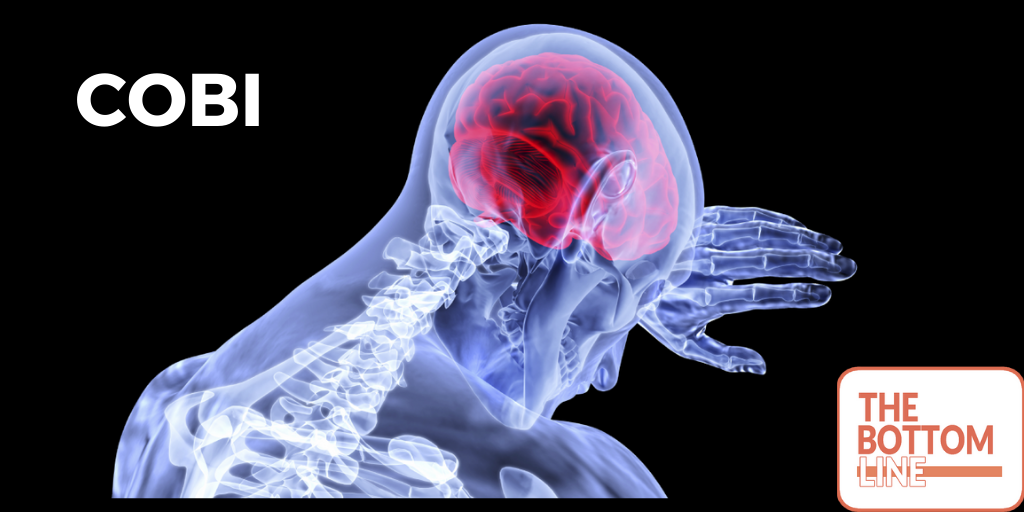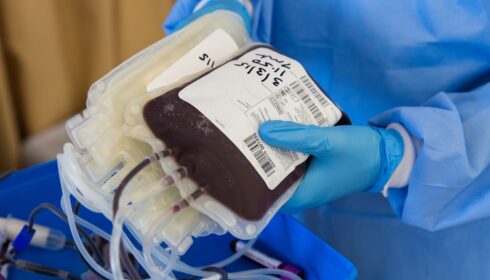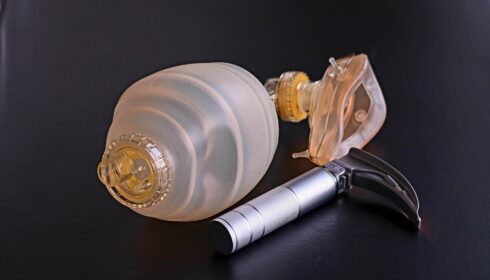COBI
Effect of Continuous Infusion of Hypertonic Saline vs Standard Care on 6-Month Neurological Outcomes in Patients With Traumatic Brain Injury: The COBI Randomized Clinical Trial
Antoine Roquilly. JAMA May 2021; Volume 325; Pages 2056-2066. doi:10.1001/jama.2021.5561
Clinical Question
- In adult patients with moderate to severe traumatic brain injury, does a continuous infusion of 20% saline, compared with standard care along, improve neurological outcomes at six months?
Background
- Patients with moderate to severe traumatic brain injury can suffer further damage due to secondary brain injury
- Intracranial hypertension due to intracranial swelling following the initial injury can result in damage of brain tissue due to lack of cerebral perfusion
- Hypertonic fluids (e.g. 3%, 7% and 20% sodium chloride and mannitol) have been used to treat intracranial hypertension
- The prophylactic administration of hypertonic fluids may also help to prevent the development of intracranial hypertension (ICH). This has been observed following sodium lactate administration to head injured patients in a phase 2 study from 2013
- The administration of hypertonic solutions is not without consequence and may cause adverse events such as hypernatraemia, pulmonary oedema and thromboembolism. Extravasation of hypertonic fluids can cause local tissue injury. High chloride fluids are associated with acute kidney injury in critically ill patients
Design
- Multi-centre, parallel-group, open-label, randomised controlled trial
- Randomisation performed through a secure web-based randomisation system
- Block randomisation in blocks of 6, in a 1:1 ratio, with stratification based on trauma severity (GCS 3-8 vs. 9-12) and on whether patient had received a bolus of hyperosmolar therapy prior to study inclusion
- Those administering the therapy were not blinded to the treatment arm
- Sample size calculation of 370 patients based on a relative reduction of 20% in poor neurological outcome (defined as a GOS-E of 1-5), with 80% at a significance level of 0.05
- This calculation assumed a poor neurological outcome of 70% in the control group and 56% in the intervention group
- Functional outcome measured by the extended GOS-E
- The GOS-E is an eight-point scale that assesses the autonomy of patients in daily acitivities (1=death, 2=vegetative state, 3= lower end of severe disability, 4= upper end of severe disability, 5= lower end of moderate disability, 6= upper end of moderate disability, 7= lower end of good recover, 8= upper end of good recovery
- Patient GOS-E assessed by structured telephone interviews performed by blinded trained research assistants at 3- and 6-months
- The primary outcome measure was analysed with an ordinal method based on the proportional odds model. This approach increases the statistical efficiency of the analysis when compared with the comparison of a categorical outcome
Setting
- 9 French University Hospitals, each caring for more than 50 TBI patients every year
- November 2017 to February 2020
Population
- Inclusion:
- Age 18 to 80 years
- Admitted to ICU with moderate to severe TBI (GCS ≤ 12)
AND
-
- Positive CT findings (extradural haematoma, subdural haematoma, subarachnoid haemorrhage, brain contusion, brain haematoma, cerebral oedema, or skull fracture)
- Exclusion:
- Pregnancy (legal obligation)
- Pre-existing functional dependence on daily activity
- Associated cervical spinal cord injury that would have affected the GOS-E evaluation independent of brain function
- Imminent death or fixed dilated pupils with a GCS of 3
- Fluid retention (ascites or pulmonary oedema, considered a contraindication towards sodium administration)
- Comparing baseline characteristics in the intervention vs control groups
- Patients in the intervention arm had a higher incidence of:
- Grade III and IV diffuse brain injury on Marshall CT brain classification (17.4% vs. 12.6%)
- Evacuable mass lesions (25% vs. 14.8%) and thus a greater incidence of neurosurgical intervention (32.1 vs. 22.0%) prior to randomisation than the control arm
- Patients in the intervention arm had a higher incidence of:
Intervention
- 20% hypertonic saline infusion
- Within 24 hours after trauma, a 1-hour bolus infusion (dose adapted to the basal blood level of sodium) was injected immediately after randomisation
- Continuous infusion of 20% hypertonic saline solution was administered (0.5-1 g/h of NaCl) and adapted to patients’ serum sodium levels to limit the risk of severe hypernatraemia (defined as Na+ >155 mmol/L)
- The blood level of sodium was monitored every 8 hours for dose adaptation
- Continued for a minimum of 48 hours and as long as a patient was considered at risk of intracranial hypertension
- Ceased when all specific therapies against intracranial hypertension were suspended for 12 hours or more
- After the intervention cessation, spontaneous normalisation of the blood level of sodium was monitored every 8 hours for 48 hours. A 1-hour bolus infusion (5 g) was injected if the sodium level was less than 140 mmol/L or decreased more than 12 mmol/L per day
- Hypertonic saline was administered for a mean duration of 2.7 days (SD 1.3)
Control
- Standard therapy (see below)
Management common to both groups
- Standard care as per the Brain Trauma Foundation guidelines
- Isotonic crystalloid solutions were used as maintenance and first-line resuscitation fluids
- Standard treatment of ICH, including boluses of sedative drugs and hyperosmolar therapy (200-250 mOsm of mannitol or hypertonic saline), moderate hypothermia, cerebrospinal fluid drainage, ventilation therapy, or decompressive craniectomy
- Bolus and continuous hyperosmolar therapy were allowed in the control group as rescue therapies for intracranial hypertension refractory to other therapies although analysis was by intention to treat
Outcome
- Primary outcome: No significant difference in the 6-month GOS-E distribution between the two groups at 6-months (adjusted odds ratio 1.02; 95% CI 0.71-1.47; p=0.92)
- Primary outcome data not obtained for 11 patients (3%): 4 patients refused the use of their medical data after randomisation (consent withdrawn) and 7 patients were not followed up at 6 months (2 were under guardianship, 1 had no TBI, and 4 were lost to follow-up)
- Favourable neurological outcomes at 6 months (GOS-E score of 6-8, indicating upper moderate disability to good recovery) – no significant difference
- occurred in 59 of 181 patients (32.6%) in the intervention group and 63 of 178 patients (35.4%) in the control group (absolute difference, −2.8%; 95% CI −12.6% to 7.0%; adjusted OR 0.85; 95% CI 0.53-1.36)
- Secondary outcomes:
- No difference in episodes of intracranial hypertension between the intervention group (33.7%) and the control group (36.3%)
- No difference in interventions to control intracranial hypertension between groups, other than induction of moderate hypocapnia (11.5% in intervention group and 5.5% in control group; difference 6.1%; 95% CI 0.3-11.9%)
- No difference in median length of ICU stay (16 days in intervention group vs. 15 days in control group; 95% CI -1.0 to 4.0 days)
- The rate of serious adverse events was 27.0% in the intervention and 24.9% in the control group
- Rates of severe hypernatraemia (Na+>160mmol/L) were 12.4% in the intervention group and 6.0% in the control group
- Thromboembolic events were recorded in 6% of patients in the intervention group and 2.2% of patients in the control group
- Physiological outcomes
- The intervention was significantly associated with higher blood osmolarity (mean difference 13.5) and sodium concentration (mean difference 7.4 mmol/L)
- The intervention was also significantly associated with a reduction of the risk of intracranial hypertension (mean difference 1.3 mmHg; OR, 0.07; 95% CI 0.02-0.20)
- More patients in the intervention group developed delayed intracranial hypertension suggesting a rebound effect with therapy cessation (OR 2.5: 95% CI 1.89-3.29)
Authors’ Conclusions
- Among patients with moderate to severe traumatic brain injury, treatment with continuous infusion of 20% hypertonic saline compared with standard care did not result in a significantly better neurological status at 6 months
- Confidence intervals for the findings were wide, and the study may have had limited power to detect a clinically important difference
Strengths
- This was a well-designed and pragmatic study attempting to answer an important clinical question
- The use of functional outcome as the primary outcome measure is preferable to mortality in the context of traumatic brain injury, as death in this scenario is usually due to a physician-led decision to withdraw active treatment. This would have introduced bias in an unblinded study
- Allocation concealment, intention to treat analysis and blinding of outcome assessors
- High subject retention despite the six month follow-up period
- Assessment of relevant physiologic end points and adverse events was conducted
Weaknesses
- Unblinded study due to the nature of the intervention and the obvious effect that it would have on serum sodium levels
- A relative reduction of 20% in poor neurological outcome is an incredibly ambitious treatment estimate. It is likely that if a benefit exists, it would be a much smaller reduction in poor neurological outcome and therefore a much larger sample size would be required to detect a difference.
- More than 50% of patients received a bolus of hypertonic saline prior to inclusion in the study. This seems reasonably high and at least partly explains why >98% of patients in the control arm had a serum sodium of ≥ 135 mmol/L
- Time between admission and treatment randomisation averaged 12-13 hours. It then took up to eight hours for separation in serum sodium between the intervention and control groups. Therefore, this study does not preclude a benefit from earlier osmotherapy.
- There are significant and important baseline imbalances which make the results difficult to interpret
- Only around 70% of patients had severe traumatic brain injury. This is the patient group most likely to benefit from prophylactic osmotherapy and may have diluted an already underpowered study
- There were a wide range of pathologies included in the group and it is difficult to say that a patient with for example an extradural haematoma would behave in a similar way to one with diffuse axonal injury. This would further reduce the generalisability of the result
The Bottom Line
- My practice of not routinely prescribing prophylactic osmotherapy for moderate and severe traumatic brain injury patients will not change
External Links
- Article: Effect of Continuous Infusion of Hypertonic Saline vs Standard Care on 6-Month Neurological Outcomes in Patients With Traumatic Brain Injury The COBI Randomized Clinical Trial
- Further reading: SOS trial protocol
- Further reading: Osmotherapy in traumatic brain injury
Metadata
Summary author: Fraser Magee @fraz65
Summary date: 5th July 2021
Peer-review editor: Celia Bradford @celiabradford





Such beautiful website. It is helping a lot. Thanks to the founders